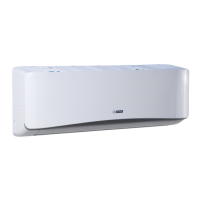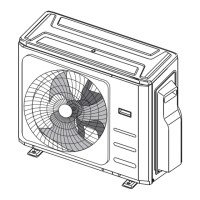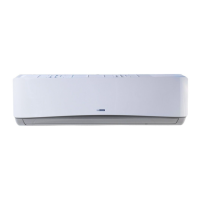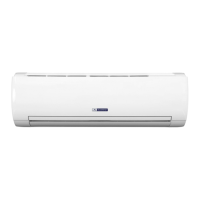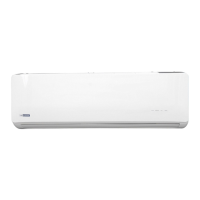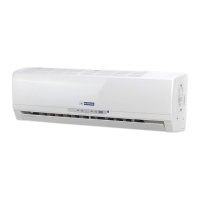Do you have a question about the Blueridge DIY Series and is the answer not in the manual?
Explains WARNING and CAUTION symbols and their severity for user safety.
Covers safe installation, repairs, and product operation warnings for user protection.
Proper power cord usage, plug care, and avoiding extension cords for electrical safety.
Procedures for safe cleaning, including power disconnection and material restrictions.
Cautions for operation with other appliances and explanation of relevant symbols.
Identifies and illustrates key components of the air conditioning unit.
Explains the codes and indicators shown on the unit's display windows.
Details optimal temperature ranges for COOL, HEAT, and DRY modes for inverter models.
Details optimal temperature ranges for COOL, HEAT, and DRY modes for fixed-speed models.
Provides tips like closing doors/windows and cleaning filters to improve unit performance.
Describes auto-restart and anti-mildew features for enhanced usability.
Explains wireless control and louver angle memory features for convenience.
Mentions the 'EC' display for refrigerant leakage detection.
How to set the vertical louver angle using the SWING/DIRECT button.
How to manually adjust the horizontal airflow angle using the deflector rod.
Cautions against extreme vertical angles and improper manual adjustment of louvers.
Explains how sleep mode adjusts temperature for energy saving during rest.
Notes that the SLEEP function is not available in FAN or DRY modes.
Instructions for manual operation when the remote control is not working.
Advises that manual mode is for testing/emergency use only.
Step-by-step guide for cleaning the indoor unit's exterior.
Instructions for removing, cleaning, and re-installing the air filters.
Caution regarding the air freshening (Plasma) filter after unit shutdown.
Explains the 'CL' and 'nF' indicators and how to reset them.
Steps to take when the unit will not be used for an extended time.
Recommended checks before periods of frequent or infrequent use.
Emphasizes that outdoor unit maintenance and repairs must be done by professionals.
Immediate actions for critical issues like damaged cords, burning smells, or abnormal sounds.
Explains protection features and reasons for mode changes.
Explains causes of white mist from indoor or both units, related to humidity or defrosting.
Explains various sounds like rushing air, squeaking, and hissing from indoor/outdoor units.
Causes for dust or odors being emitted from the unit during operation.
Issues with the outdoor fan and unit erratic behavior, including interference.
Lists factors like temperature settings, dirty heat exchangers, blocked inlets/outlets.
Provides remedies such as adjusting settings, cleaning filters, and closing openings.
Covers issues like power failure, dead batteries, timer activation, and refrigerant problems.
Addresses issues related to external temperature and insulation.
Explains flashing lamps and error codes (E, P, F series) and general troubleshooting steps.
Outlines options for disposing of the appliance as per regulations.
Special notice on the dangers of improper disposal in natural surroundings.
| Brand | Blueridge |
|---|---|
| Model | DIY Series |
| Category | Air Conditioner |
| Language | English |
